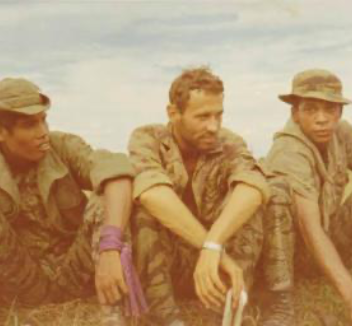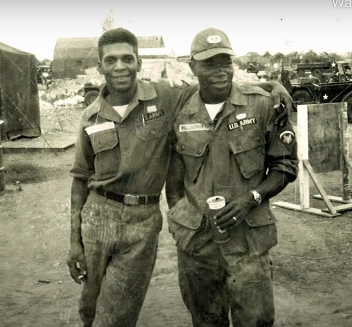
Melvin Morris joined the military at age 17 to escape a poverty-stricken childhood in Okmulgee, Oklahoma, where he was born in 1942. He became one of the first African American Green Berets in 1963 and volunteered twice for deployments in the Vietnam War.

MEDAL OF HONOR RECIPIENT MELVIN MORRIS RETRACES THE ROUTE OF THE 54TH MASSACHUSETTS UP THE BEACHES OF MORRIS ISLAND. THE ACTION WAS THE EARLIEST FOR WHICH AN AFRICAN AMERICAN RECEIVED THE MEDAL OF HONOR. CHARLES HARRIS
On September 17, 1969, Morris, a staff sergeant, commanded a five-man Special Forces team supporting South Vietnamese troops near Chi Lang. They came upon a large store of enemy food and weapons smuggled across the Cambodian border and immediately were attacked by North Vietnamese troops.
When the sergeant commanding another Green Beret team was killed near an enemy bunker, Morris led his team forward and crossed a minefield with two volunteers to recover his body. They reached him but came under intense fire and the other two soldiers were wounded.

SSG MORRIS (RIGHT) AND HIS MEN IN VIETNAM. VILA CHAU


“Being here on Morris Island, my mind is constantly racing, trying to relive the whole event.”
Morris helped them back to a defensive position, grabbed 20 grenades and ran back to the body, still under fire. He destroyed four bunkers with the grenades, recovered the body and then returned to the spot yet again to retrieve a map case containing classified information. Shot three times, Morris took refuge behind a tree and was pinned down for more than two hours before he could be rescued. He spent more than three months recovering in hospitals.
“But I told myself that now, I’ve got a lot of work ahead of me because I have a message to share. Young children need to know that people are out there putting their lives on the line for them every day.”
His extraordinary courage and service was recognized with a Distinguished Service Cross, the nation’s second-highest military honor, in April 1970 and he returned to Vietnam for another tour.
After a lengthy reevaluation of Distinguished Service Cross recipients from World War II, Korea and Vietnam to root out instances of racial discrimination, it was determined that Morris’s courageous actions on that September day in 1969 were above and beyond the call of duty and merited the Medal of Honor. It was placed around his neck by President Barack Obama at a ceremony at the White House on March 18, 2014.

Modern portraiture by Charles Harris